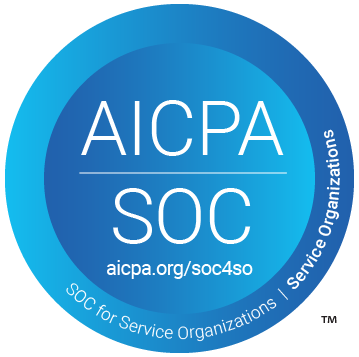Supply Chain Collaboration:Align People, Processes, and Partners
Stronger Together: How Collaboration Shapes Resilient Supply Chains
Supply chains are only as strong as the connections within them. Whether it’s coordinating with suppliers, aligning with internal teams, or staying informed across time zones and systems – collaboration isn’t optional. It’s fundamental.
This makes supply chain collaboration important for improving efficiency, reducing costs, and enhancing visibility across all supply chain functions.
Supply Chain Collaboration is about creating shared visibility, responsibility, and action across all stakeholders involved in planning, procurement, and fulfillment. A significant challenge in this process is the lack of visibility and coordination, which can hinder decision-making and increase costs. It turns disconnected efforts into coordinated progress.
In a siloed supply chain, every delay becomes a surprise. In a collaborative one, every step is anticipated.
To remain competitive, organizations must continually seek ways to improve supply chain collaboration.
Make collaboration your advantage
What Is Supply Chain Collaboration?
Supply Chain Collaboration refers to the structured coordination and data sharing between different parties involved in a supply chain – including suppliers, buyers, carriers, logistics providers, and internal teams. It ensures that decisions are made with full context, and actions are taken with shared understanding.
Supply chain collaboration software plays a crucial role in enabling seamless data sharing and real-time data sharing among partners. These digital platforms facilitate transparent, automated, and efficient communication, allowing all stakeholders to access up-to-date information and respond quickly to changes or disruptions.
True collaboration goes beyond basic communication. It requires a common view of data, a clear framework for action, and technology that enables both flexibility and accountability. The use of supply chain collaboration tools and electronic data interchange (EDI) are key enablers of effective collaboration, supporting integration, streamlined communication, and efficient order processing and inventory management.
Essential pillars of effective collaboration
- Shared access to real-time data
- Defined roles and responsibilities
- Automated updates and status notifications
- Integrated systems across organizational boundaries
- Communication tools that support decisions, not just discussions
- Coordination and information sharing among internal departments such as logistics, inventory, and marketing
Common Barriers to Collaboration in the Supply Chain
Despite best intentions, many supply chain stakeholders still operate in silos. Fragmented business processes can hinder collaboration efforts, making it difficult for teams to work together effectively. Tools are fragmented. Data is inconsistent. And when disruptions occur, confusion spreads faster than resolution.
To overcome these barriers, organizations must prioritize continuous improvement to strengthen collaboration and adapt to changing supply chain demands.
Typical issues include:
- No shared platform or single source of truth
- Version conflicts in documents and data
- Misaligned priorities across departments or partners
- Delays in information sharing and approval loops
- Lack of accountability in joint processes
- Difficulty coordinating with multiple trading partners, leading to inefficiencies and reduced visibility across the supply chain
How Collaboration Transforms Supply Chain Execution
Collaborative supply chains are more resilient, responsive, and efficient. When every stakeholder sees the same data, works within the same process, and trusts the flow of information, delays are reduced, and outcomes improve. Collaboration helps optimize operations and streamline processes by simplifying workflows, reducing redundancies, and enhancing coordination in areas like forecasting, ordering, inventory management, and logistics planning.
With a platform like Logward, companies enable real-time collaboration across the entire supply chain landscape – without needing custom development or complex integrations. This collaborative execution leads to cost reduction and improved efficiency by increasing visibility, coordination, and problem-solving among supply chain partners.
Key outcomes of collaborative execution:
- Faster decision-making across stakeholders
- Proactive resolution of exceptions and delays
- Reduced email and meeting overhead
- Improved supplier and partner relationships
- A scalable framework for cross-team alignment
- Higher service levels through better collaboration, leading to optimized inventory and timely product availability
Features Enabling Supply Chain Collaboration
Collaboration Tools
Create shared views, assign roles, leave comments, and track activity in real time.
These collaboration tools are essential for effective supplier collaboration, enabling open communication, shared goals, and joint innovation between your team and suppliers.
Workflow Automation
Define collaborative approval chains, trigger alerts, and enforce handoffs between stakeholders.
Workflow automation can also streamline the management and approval of purchase orders, ensuring purchase order accuracy and improving overall procurement efficiency.
Table Editor
Create, filter, update, and manage shared data tables with zero coding.
Managing shared tables is essential for teams that need to collaborate on up-to-date information. With our platform, you can easily filter, update, and maintain shared data tables without writing a single line of code. This streamlines workflows and ensures everyone is working with the latest data.
Effectively managing operational data in shared tables is crucial for collaboration, as it enables teams to leverage real-time information for better decision-making and process optimization.
Integration Interfaces
Exchange structured data between systems while maintaining context and clarity.
Integration interfaces also enable seamless collaboration with contract manufacturers, improving visibility and coordination across the supply chain.
Visibility Dashboards
Ensure everyone sees the same information at the same time.
Visibility dashboards also provide real-time insights into inventory levels, helping teams optimize stock, supports demand forecasting, and collaborate more effectively across the supply chain.
Global Supply Chain Collaboration
Navigating cross-border partnerships and complexities
Successfully managing global supply chain collaboration requires a strategic approach to cross-border partnerships and the complexities they entail. Companies must establish standardized processes and procedures to ensure consistency and compliance across regions. Investing in supply chain visibility technologies is crucial for tracking shipments, monitoring inventory, and maintaining clear communication with logistics partners worldwide. Additionally, understanding and addressing cultural and linguistic differences can help prevent misunderstandings and foster stronger collaboration. By prioritizing transparency, building trust with local partners, and leveraging the right tools, organizations can overcome the challenges of global chain collaboration and achieve greater competitiveness in the international marketplace.
Risk Management in Supply Chain Collaboration
Effective collaboration in the supply chain helps businesses respond faster to disruptions by improving visibility and enabling coordinated action across partners. A supply chain collaboration platform supports operational risk management by consolidating data, highlighting exceptions, and streamlining communication between stakeholders. With real-time access to transport and order information, companies can quickly identify issues, align on next steps, and minimize the impact of delays or disruptions. While no platform can prevent every risk, enhanced collaboration strengthens day-to-day resilience and builds a more agile supply chain.
The Role of Transparency and Trust in Supply Chain Collaboration
In supply chain collaboration, transparency and trust are essential for effective risk management. When supply chain partners access the same real-time data and communicate through shared digital platforms, they can respond to disruptions with greater alignment and speed. A collaborative supply chain environment—with visibility into shipments, supplier performance, and order status—fosters accountability and reduces miscommunication. While Logward does not replace strategic risk planning, it strengthens operational resilience by enabling synchronized responses and building confidence across the supply chain network.
Sustainability and Supply Chain Collaboration
Sustainability has become a vital focus in supply chain collaboration, as organizations strive to reduce their environmental impact and enhance their social responsibility. By working closely with supply chain partners, companies can align their sustainability goals with collaborative strategies, driving positive change throughout the entire supply chain. Supply Chain collaboration enables businesses to promote sustainable practices, minimize their environmental footprint, and mitigate the risk of reputational damage associated with unsustainable operations.
Aligning environmental and social goals with collaborative strategies
To effectively align environmental and social goals with collaborative supply chain strategies, companies must first gain a comprehensive understanding of their supply chain’s impact. This involves conducting regular audits, implementing sustainable procurement practices, and utilizing supply chain visibility technologies to monitor progress. Engaging supply chain partners is key—by providing training, sharing best practices, and encouraging the adoption of responsible behaviors, organizations can foster a culture of sustainability. Effective supply chain collaboration ensures that all partners are working toward shared environmental and social objectives, resulting in a more sustainable, resilient, and responsible supply chain that benefits both business and society.
Let’s Build a More Collaborative Supply Chain
Why It Matters – Business Benefits
- Fewer Delays: Align expectations and prevent errors early
- Better Relationships: Strengthen trust across your network
- Faster Response: Handle disruptions with speed and clarity
- More Accountability: Keep track of who’s doing what – and when
- Higher Efficiency: Eliminate redundant updates and confusion
- Improved Customer Satisfaction: Enhance order fulfillment, reduce delays, and boost customer loyalty through better coordination and technology.
- Benefits of Supply Chain Collaboration: Share real-time data and build strong relationships to increase efficiency, trust, and long-term success.
- Successful Supply Chain Collaboration: Drive business growth and resilience by implementing best practices, improving communication, and leveraging technology solutions.
Frequently Asked Questions
Is supply chain collaboration only about technology?
No. Technology supports collaboration, but the foundation is shared goals, aligned processes, and mutual trust.
Who needs to be involved in a collaborative supply chain?
It depends on your process. Typically, procurement, logistics, operations, suppliers, and external partners all play a role. Strong supplier relationships are essential, especially when coordinating with global supply chains to ensure resilience and efficiency.
How is this different from visibility?
Visibility shows you what’s happening. Collaboration enables people to act on that information – together. Collaboration also allows for better inventory management, more accurate demand forecasts, and real-time sharing of production schedules to optimize supply chain performance.
Does collaboration slow things down?
Quite the opposite. With clear roles, shared data, and structured workflows, decisions are made faster and with fewer mistakes. Collaboration can also reduce transportation costs and inventory holding costs by optimizing logistics and inventory levels across partners.
Can we start small and scale later?
Yes. Collaborative platforms like Logward are modular – you can begin with one workflow or team and expand as needed.
What is the difference between horizontal collaboration and vertical collaboration?
Horizontal collaboration involves partnerships between companies at the same industry level, such as competitors or peers, to share resources, reduce costs, and optimize logistics. Vertical collaboration refers to cooperation between different levels of the supply chain, like suppliers, manufacturers, and retailers, to align production, manage demand, and improve efficiency.
How does collaboration help manage supply disruptions and respond to changing customer demands?
Collaboration strengthens the ability to manage supply disruptions by improving communication, risk management, and real-time visibility across the supply chain. It also enables organizations to quickly adapt to changing customer demands, ensuring higher customer satisfaction and competitive advantage.
What is the role of collaboration in supply chain management?
Successful collaboration is crucial for effective supply chain management. It integrates and shares information among stakeholders, often using advanced technologies, to improve efficiency, reduce disruptions, and adapt to the complexities of global supply chains.
Why is supply chain collaboration important in production processes?
Supply chain collaboration is central to production processes because coordinated workflows, technology integration, and lean principles help optimize production, reduce costs, and enhance product quality across all partners.





Global supply chain collaboration brings together supply chain partners from across different countries and regions, creating a complex but rewarding network. Managing a global supply chain means navigating cross-border partnerships, coordinating with multiple tiers of suppliers, and ensuring compliance with diverse regulatory requirements. Despite these challenges, global chain collaboration offers significant advantages, such as access to new markets, improved supply chain visibility, and enhanced operational efficiency. By building strong relationships with international partners and leveraging collaborative supply chain strategies, companies can unlock new opportunities and drive business growth on a global scale.